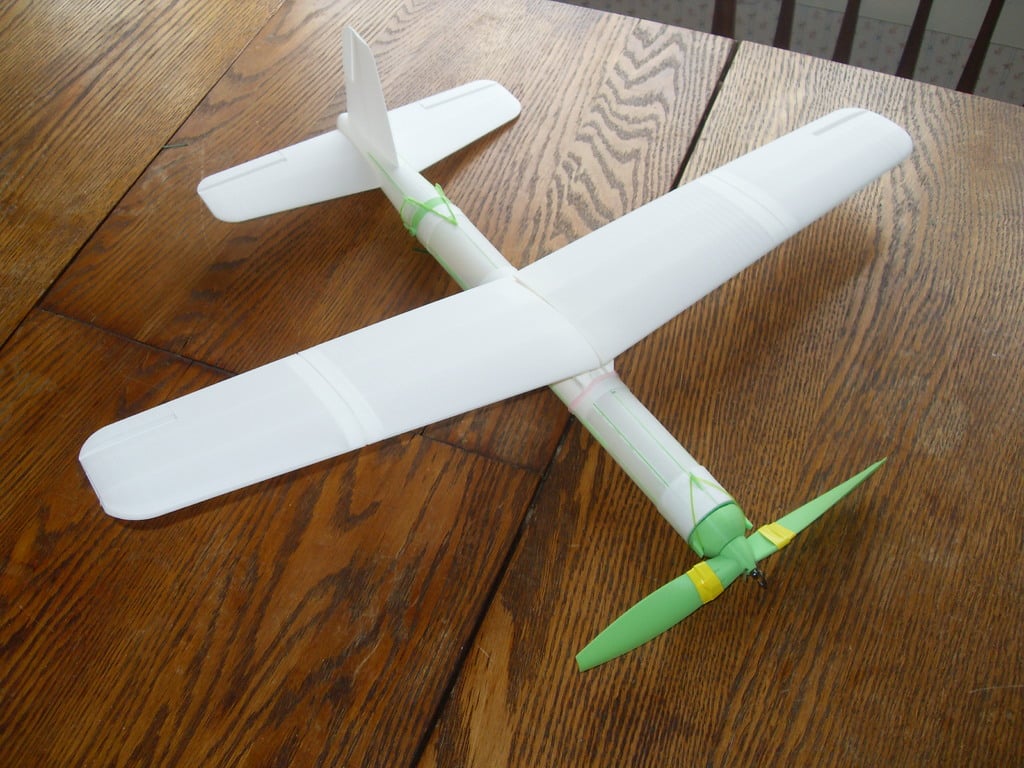
Flyer Mk. 1
thingiverse
[5/14/2020: I have designed and posted some updates for this airplane that include wings with more rigid spars (that do not add weight), and steeper pitch propellers. These updates can be found at https://cults3d.com/en/3d-model/various/flyer-mk-1a-modifications. I will be using that site for my designs from now on.] [3/21/2020: The latest Thingiverse site update has made a lot of the description text and instructions for this design almost unreadable. To address this issue, I have added an 'rtf' document to the files section of this design that has all of the printing, assembly, and flying instructions for this model. If you have not already done so, I recommend that you download that document and refer to it instead of the instructions listed below.] [3/1/2020: Note that I have added a change log to the file section. This change log will list any improvements or corrections that I make to the printing instructions and the print files.] For the last two years, I have been experimenting with 3D-printed rubber-band powered model airplanes. The challenge in doing this was to print something powered only by a rubber band that is light enough to fly, but is at the same time strong enough to survive repeated landings. After nearly two years of experiments, I believe that I have finally achieved this goal, and the Flyer Mk. 1 is the result. This video gives a good overall description of the Flyer Mk. 1, and shows it in action: https://youtu.be/2k9LypU1OJI. Not only will you get to see the Flyer actually fly in this video, but you can also see it crashing into trees. (I attribute those crashes to pilot error.) The material that makes this airplane possible is a lightweight PLA filament made by ColorFabb BV in the Netherlands. This lightweight PLA filament expands as it is being extruded. Depending on your print settings, this filament can expand to a 'foam plastic' that can be as little as 35% of the density of normal PLA. This results in structures that are very lightweight and have a degree of flexibility that makes them very resilient. I believe this filament is one of the most innovative 3D printing materials of the last few years, and I am really looking forward to seeing what others can do with it. The Flyer Mk. 1 is not something that can be printed quickly. As you can see, this fairly simple looking model airplane has a lot of parts. But with patience, you can print and build something rather incredible; a truly flyable, 3D-printed rubber powered airplane. I believe that up until this design, this has never been done before.
With this file you will be able to print Flyer Mk. 1 with your 3D printer. Click on the button and save the file on your computer to work, edit or customize your design. You can also find more 3D designs for printers on Flyer Mk. 1.
